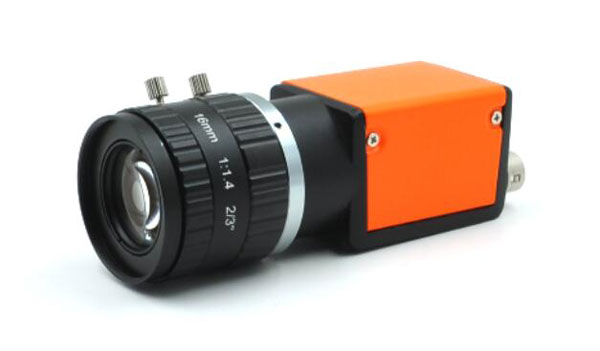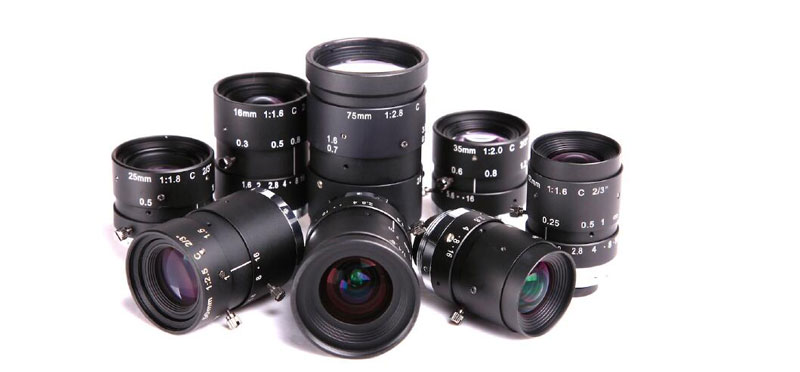How to Choose a Right Lens for Industrial Camera?
Industrial camera is a key component in the machine vision system. Its most essential function is to convert the optical signal into the ordered electrical signal of the small-size high-definition industrial camera. In the machine vision system, the lens of the industrial camera are equivalent to the eyes of human beings. Its main function is to focus the targeted optical images on the photo surface of the image sensor (industrial camera). All image information of the visual system treatment can be obtained from the lens of industrial camera. The lens quality of the industrial camera will directly affect the entire performance of the visual system. As an image device, the lens of industrial camera usually constitute a complete image collecting system with the power source and camera. Therefore, the lens selection of the industrial camera is restrained by the entire system requirement. Generally, it can be analyzed and considered as the following aspects.
Wave length and zoom lens or not
It is easily confirmed that whether the zoom lens or fixed focal length (prime) lens is needed for the industrial camera lens. Focus or not of the working wave length of the industrial camera lens is easily to be confirmed in the first. In the image process, if it is required to change the amplification factor, the zoom lens should be used, otherwise the prime lens are enough.
As to the working wave length of the industrial camera lens, visible light wave band is the most common. There are also the applications of other wave bands. Is it necessary to have any additional light filtering measure? Is it the monochromatic light or polychromatic light? Is it able to effectively avoid the influence of the stray light? It is required to confirm the working wave length of the lens after comprehensively balancing the above problems.
Give priority to the special requirement
There might be special requirements combined with the practical applications. The special requirement must be confirmed in the first, for example, if there is an amount measurement function, if it is required to use the telecentric lens, if the image focus depth is great and so on. The depth of focus is usually not valued seriously, but it should be considered by any image process system.

Working distance and focal length
Working distance and focal length are usually considered jointly. Generally speaking, such a philosophy is adopted: firstly confirm the resolution rate of the system, comprehend the amplification rate combined with the CCD pixel size, and know the possible objective image distance combined with the space structure constraint, so as to further estimate the focal length of the industrial camera lens. Therefore, the focal length of the industrial camera lens is related to the working distance and the camera resolution (and CCD pixel size) of the industrial camera lens.
Image size and image quality
The image size of the industrial camera lens to be selected should be compatible to the photosurface size of the industrial camera. The principle of “compatible to the small by the big” should be followed, that is, the photosurface of the camera should not exceed the image size indicated by the lens, otherwise the image quality of the margin field of view will not be guaranteed. Image quality is required to mainly focus on MTF and distortion. In the measurement application, distortion should be attached great importance.
Aperture and lens mount
The aperture of the industrial camera lens mainly affects the brightness of the image surface. However, in the present machine vision, the final image brightness is decided by numerous factors jointly: aperture, camera grain, integral time, light source and so on. Therefore, in order to obtain the required image brightness, there are many steps for regulation.
The industrial camera lens mount refers to its mounting interface with the camera. They two must be matched. Once the two fail to be matched, a change-over should be considered.
Cost and technology maturity
If there are several schemes satisfying the requirement after considering the above factors, the cost and technology maturity could be taken into account, so as to choose with priority.

An example for selecting a lens
Now we will take an example to explain how to choose a lens for an industrial camera. For instance, if it is required to match the industrial camera lens to machine vision system of the coin inspection, the constraining condition is known that the industrial camera is CCD 2/3 inch, pixel size 4.65μm, C-mount. The working distance is longer than 200mm and the system resolution is 0.05mm. The light source adopts the white LED light source.
The basic analysis of selecting a lens are as follows:
1. The lens working with the white LED light source should be the visible light segment. There is no variable-zoom requirement, so the prime lens can be selected.
2. It is used for industrial inspection, and it needs the measurement function, so the lens to be selected has a requirement of lower distortion.
3. Working distance and focal length
The amplification rate of imaging: M = 4.65/(0.05 x 1000) = 0.093
Focal length: F = L*M/(M+1) = 200*0.093/1.093 = 17mm
If the objective distance is required to be longer than 200mm, the focal length of the lens to be selected should be greater than 17mm.
4. The image size of the lens to be selected should be no smaller than the CCD format, namely, at least 2/3 inch.
5. The mount of the lens is required to be C mount, so as to coordinate with the industrial camera. There is temporarily no requirement to the aperture.
On the basis of the analysis and calculation of the above factors, the “outline” of the industrial camera lens can be initially obtained: focal length greater than 17mm, fixed focus, visible light segment, C mount, able to coordinate with at least 2/3 inch CCD pixel size, and small image distortion. According to these requirements, further selection can be conducted. If several lens can satisfy these requirements, it is suggested to further optimize and select a best one.

